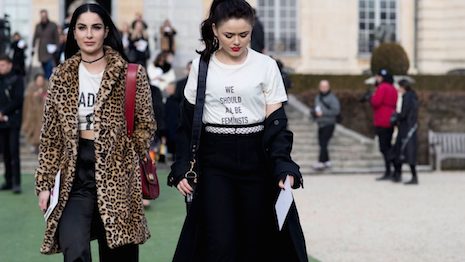- About
- Subscribe Now
- New York,
April 10, 2018

 Predicting what negative things consumers will react to is difficult but essential. Image credit: Kamdora
Predicting what negative things consumers will react to is difficult but essential. Image credit: Kamdora
NEW YORK - In a time when social media allows customers to voice their criticisms of brands' decisions at any time, navigating through those crises becomes easier while bringing on new challenges.
Speaking at Forrester’s Consumer Marketing event on Apr. 6, an analyst from the research firm explained how Forrester views brand crises, how they can be predicted and how to handle them once they arise. By way of example, she brought up how Facebook’s recent controversies involving Cambridge Analytica have affected its users' opinion of the platform.
"How do you avoid a brand crisis? I’ll warn you the answer isn’t easy," said Anjali Lai, senior data analyst at Forrester. "It's not what you're currently measuring.
"You can't just look at stated behavior," she said. "How many people have been threatening to move to Canada every time there's an election and how many people actually did it?"
Dodging the bullet
When brands get things wrong, and they inevitably do, loyal customers can turn into fierce critics in a flash.
During her panel, Ms. Lai gave some examples of how staying on customers’ good sides can be difficult. For instance, when Land’s End was criticized for publishing an interview with Gloria Steinem, the retailer apologized only to meet further criticism from a different segment of consumers for apologizing at all.
Ms. Lai emphasized that predicting these sorts of moments can be exceedingly difficult, as customers’ stated intentions are not always reliable, nor are their answers to surveys. Brands also cannot judge individuals' responses based on demographics.
Forrester's Anjali Lai. Image credit: Forrester
"Catering to different segments doesn’t always help," Ms. Lai said. "There's something underlying all of this that causes people to be open and engaging with brands.
"If you can measure this thing, you can understand how current events cause it to wax and wane."
Forrester developed a series of measurements to determine how consumers will react to a brand crisis. These measurements gauge customers on four axes: identity versus aloneness, novelty versus comfort, efficacy versus impotence and trust versus distrust.
Ms. Lai found that these axes are the best way to judge how consumers are feeling and how they will react to events.
Brand image
Crises and controversies can pop up anywhere and when operating overseas, such issues can be even more difficult to predict.
For example, Christian Dior was harshly criticized on social media for its appointment of Chinese actress Yang Ying, aka Angelababy, as its first brand ambassador in China.
Chinese Kim Kardashian type celebrity Angelababy becomes Christian Dior's first Chinese ambassador. (Shutterstock)
The controversy stemmed from a long and strange saga in which Ms. Ying was accused of having plastic surgery, allegations which she sued over, leading to much anguish and negative press for all involved (see story).
But issues like these are also highly localized. What is controversial in one place, such as having plastic surgery in China, is likely not nearly as big a deal as in the brand’s home country.
Forrester hopes that its new index of gauging customers’ feelings will help avoid such problems in the future.
"What it means, measure how people move along these scales, use this data to show which consumers are moving down the scales and are withdrawing from brands and are less likely to engage," Ms. Lai said.
"Make sure your messaging fits with how consumers feel along these dimensions," she said. "Strike the right emotional core to dial up that energy."
Share your thoughts. Click here